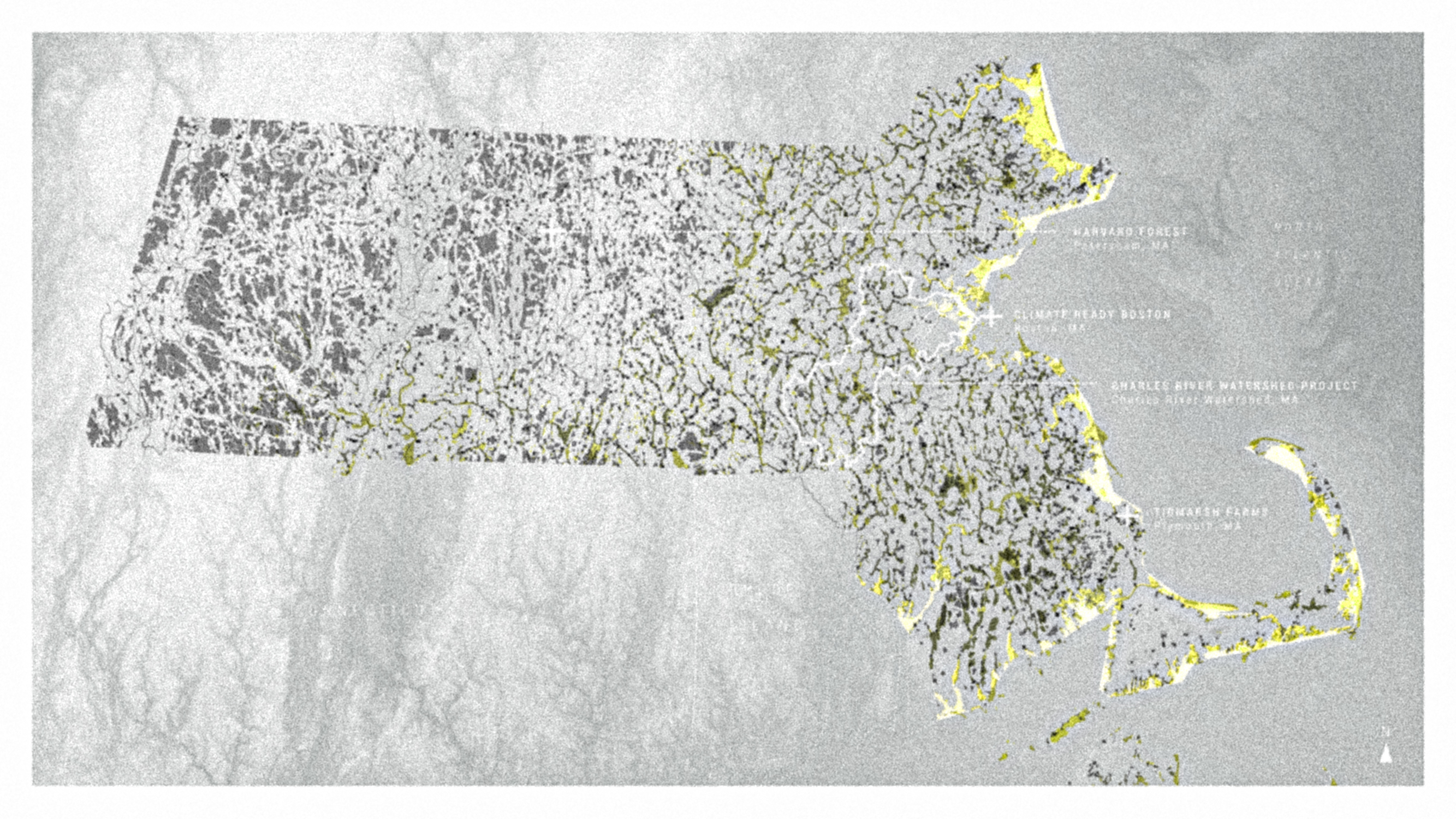*CHANGES TO THE LAND | Primary Case
New England, USA
Harvard Forest
Changes to the Land is a report whose title draws on the book by the same name by the American environmental historian William Cronon. The report is an acre-by-acre analysis of the Massachusetts landscape by researchers at the Harvard Forest and Smithsonian Institute. The project is an exchange between natural resource and conservation professionals that created four different scenarios that are not formal projections, but rather contrasting views of the future that were created using land use and ecosystem models. The report comes after a Harvard Forest vision to increase forest cover across the state of Massachusetts from 1 million to 2.5 million acres as sustainably managed private woodlands; Changes to the Land was then prepared to show competing landscape visions to the Harvard Forest proposal. The four scenarios: recent trends, opportunistic growth, regional self-reliance and forests as infrastructure use different metrics of forest conservation, development, timber harvest and agricultural land use, suggests the policy implications of the study, in which the forests as infrastructure scenario provides significantly enhanced ecosystem benefits to people and the environment, while the opportunistic growth scenario rolls back environmental regulations. The study uses large-scale geospatial analysis to create photorealistic visualizations of land use across parcels, as well as large-scale maps and graphs to show different forestry practices and other metrics.
0 - 6000 feet above sea level

tags: arboriculture, sequestration, changing species, adaptation, anticipatory adaptation, remain, ecological, institutional, scenario plan, increased storm frequency, sea level rise and storm surge, flooding, soil infertility, watershed degradation, deforestation, habitat loss, pollution, cultural preservation, heritage, Massachusetts, Penobscot, Aucocisco, Wabanaki Confederacy, Pennacook, Pentucket, Nipmuck, Podunk, Poquonock, Manissean, Wampanoag, Mohican, Pawtucket, Pequot, Wappinger, Paugusset, Quinnipiac, Western Nehantick, Eastern Nehantick, Tunkis, Sicoags, Massacoes, Wangunks, Pocumtuc, Nearctic, Temperate Forest
References:
Primack, Richard B. Walden Warming: Climate Change Comes to Thoreau’s Woods. Chicago: University of Chicago Press, 2014.
Thompson, Jonathan, Kathy Fallon Lambert, David Foster, Meghan Blumstein, Eben Broadbent, Angelica Almeyda Zambrano. Changes to the Land: Four Scenarios of the Massachusetts Landscape. Petersham: Harvard Forest, 2014.
Thompson, Jonathan R., David R. Foster, Robert Scheller, David Kittredge. “The influence of land use and climate change on forest biomass and composition in Massachusetts, USA.” Ecological Applications 21, no. 7 (2011): 2425-2444.
Links:
https://harvardforest.fas.harvard.edu/sites/default/files/Changes%20to%20the%20Land%20-%20final%20report%20-%20Jan%202014.pdf